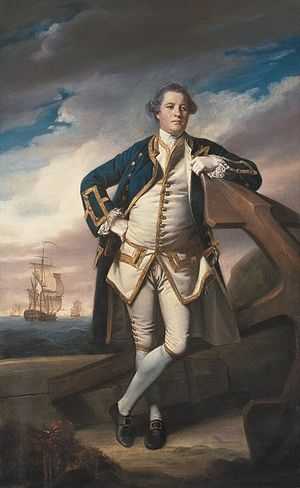Action of 31 May 1762

| Action of 31 May 1762 | |||||||
|---|---|---|---|---|---|---|---|
| Part of the Anglo-Spanish War (1762–63) | |||||||
| |||||||
| Belligerents | |||||||
|
|
| ||||||
| Commanders and leaders | |||||||
|
Herbert Sawyer Philemon Pownoll | Unknown | ||||||
| Strength | |||||||
|
1 frigate 1 Sloop | 1 Frigate | ||||||
| Casualties and losses | |||||||
| Light | 1 frigate captured | ||||||
| ||||||
The Action of 31 May 1762 was a minor naval engagement that took place off Cadiz between a British Royal Naval frigate and a sloop against a Spanish frigate during the recently declared Anglo-Spanish War (1762–63). When the Spanish ship surrendered found that she carried a large cargo of gold and silver that would lead to the greatest amount of prize money awarded to British warships.[2]
The war with Spain was only four months old when the Royal Navy sent a blockading force to the Spanish coast. The aims of the blockade were to block the dispatch of Spanish reinforcements to the Caribbean where Havana was under British siege, and to impede Spanish operations against Gibraltar or in the Mediterranean.[1]
On 15 May 1762 Captain Herbert Sawyer's frigate, the 28-gun HMS Active was sailing in company with the 18-gun sloop Favourite, Captain Philemon Pownoll, off the coast of Spain near the port of Cadiz. There they sighted the 26-gun Spanish frigate Hermione.[3] The British vessels came up beside Herminone and fired a few rounds. The Spanish replied with a broadside, and then both Active and Favourite let loose their broadsides. Soon Hermione only had her mizzen mast still standing. As his casualties rose, and having lost the ability to maneuver, the Spanish captain struck.
The British soon took possession; only then did they realize this was no ordinary frigate as they discovered the riches on board.[1][2] Hermione had sailed from Lima on 6 January and was bound for Cadiz with a cargo of bags of dollars, gold coin, ingots of gold and silver, cocoa, and blocks of tin.[3][4]
Her captors took Hermione into Gibraltar. There she was eventually condemned as a prize, with her contents, hull, and fittings valued at £519,705 10s 0d, approximately £67.7 million at today's prices.[5] Pownoll and Sawyer each received captain's shares of the prize money of £64,872, approximately £8.45 million at today's prices[5]. Ordinary seamen received £480 each, equivalent to thirty years' wages.[2] The prize award is still a record.[3][6]
Sawyer and Pownoll were now suddenly extremely wealthy. Pownoll used his money to buy the Sharpham estate at Ashprington, and to build a large house there designed by Robert Taylor and with gardens designed by Capability Brown.[2][3] It was about this time that he commissioned a portrait from Sir Joshua Reynolds.[2]
See also
- Great Britain in the Seven Years War
References
- Notes
- ↑ 1.0 1.1 1.2 Allen p. 221
- ↑ 2.0 2.1 2.2 2.3 2.4 Bradt. Slow Devon & Exmoor. p. 144.
- ↑ 3.0 3.1 3.2 3.3 Herbert Sawyer at Oxford Dictionary of National Biography
- ↑ The London Magazine. p. 396.
- ↑ 5.0 5.1 UK CPI inflation numbers based on data available from Gregory Clark (2014), "What Were the British Earnings and Prices Then? (New Series)" MeasuringWorth.
- ↑ "Nelson and His Navy - Prize Money". The Historical Maritime Society. Retrieved 2008-08-04.
- Bibliography
- Clowes, William Laird. (2003). The Royal Navy: v. 3: A History - From the Earliest Times to 1900. Chatham Publishing. ISBN 978-1861760128.
- Allen, Joseph (1852). Battles of the British Navy, Volume 1. Bohn's illustrated library. ASIN B009ZMMQ56.